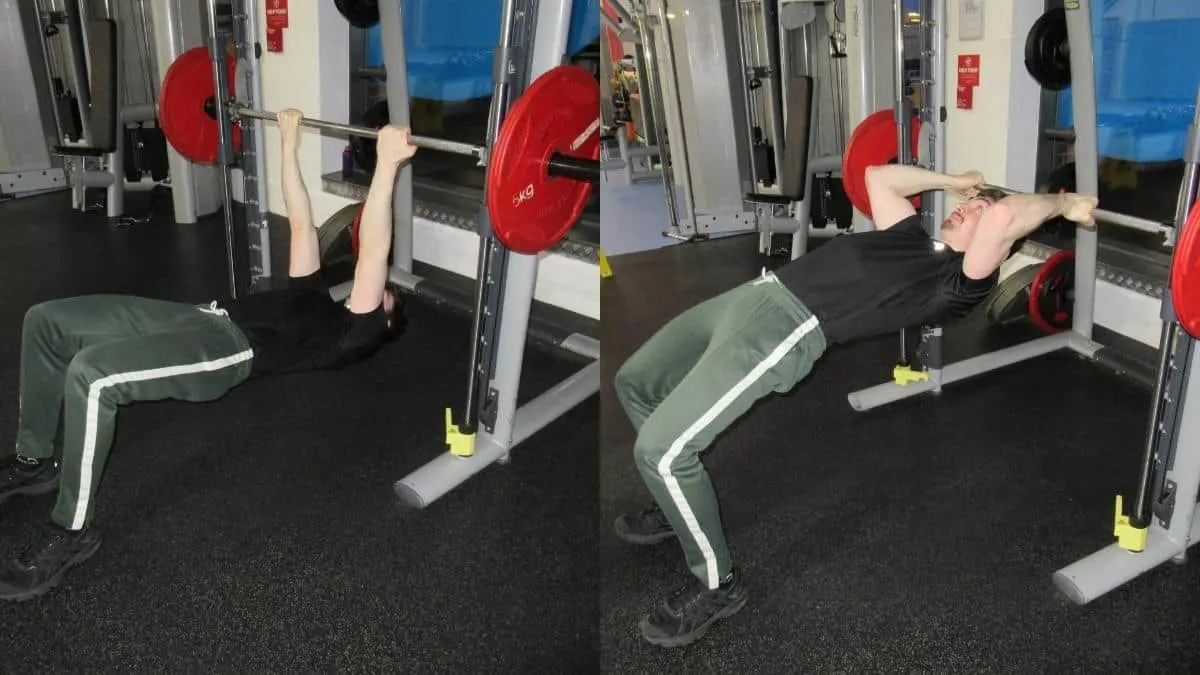The primary biceps brachii action besides forearm supination is elbow flexion, which involves bringing your lower arms closer to your biceps. The inverted bicep curl is an excellent exercise for building your arms because it trains both of these functions simultaneously.
It also requires absolutely zero weights. So as long as you have a secure place to hang from, you can do inverted curls anywhere you like. This guide shows you the correct technique and explains the benefits of the exercise for gaining strength and muscle.
Related: Bicep exercises without weights
Inverted bicep curl exercise details
- Also Known As: Inverted rack curl
- Main Muscles: Biceps brachii
- Secondary Muscles: Brachialis, brachioradialis, forearm flexors, abs
- Exercise Type: Strength
- Exercise Mechanics: Isolation
- Difficulty Level: Intermediate
- Equipment Needed: None (but most lifters use an empty bar in the squat rack)
How to do inverted curls
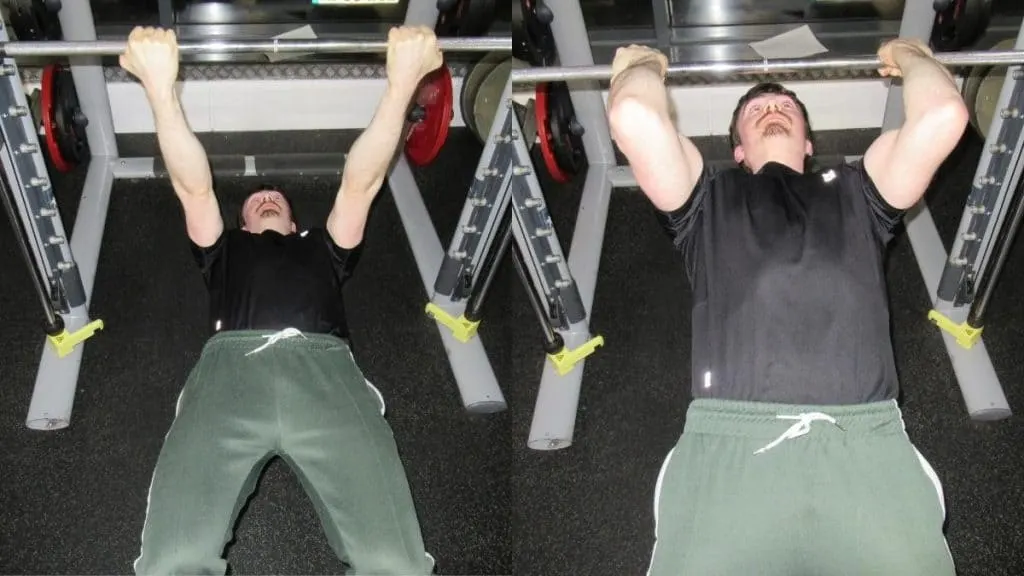
- Find a secure bar to hang from. This can be equipment that’s at the park or the bar of a squat rack or Smith machine if you train in a gym.
- Sit underneath the bar so that it’s directly over your mid-chest and then grab it with a shoulder-width underhand grip.
- Extend your legs out in front of you but keep a slight bend in your knees.
- Make sure that your back is straight and that your abs are contracted.
- Curl your chest toward the bar by flexing your biceps while ensuring that your elbows don’t travel behind your torso (we don’t want to turn this into a row).
- Keep pulling yourself up until your chest touches the bar or until your biceps are maximally contracted (when your forearms press right up against your biceps).
- Hold the contraction for a second, and then lower yourself under control until your elbows are fully extended.
- Perform 3-5 sets of 8-20 reps.
To make the exercise harder, you can also curl your head up to the bar and then in front of it. This intensifies the peak contraction because now you’re integrating shoulder flexion into the movement, which is an anatomical function that the biceps assist the deltoids with.
Inverted rack curl pros and cons
The inverted curl is popular with those who perform calisthenics and/or don’t have access to free weights because it builds plenty of muscle without the need for any equipment. All you need is a secure place to hang from, which is to say, some sort of bar positioned between hip and stomach height.
Pro: It’s convenient
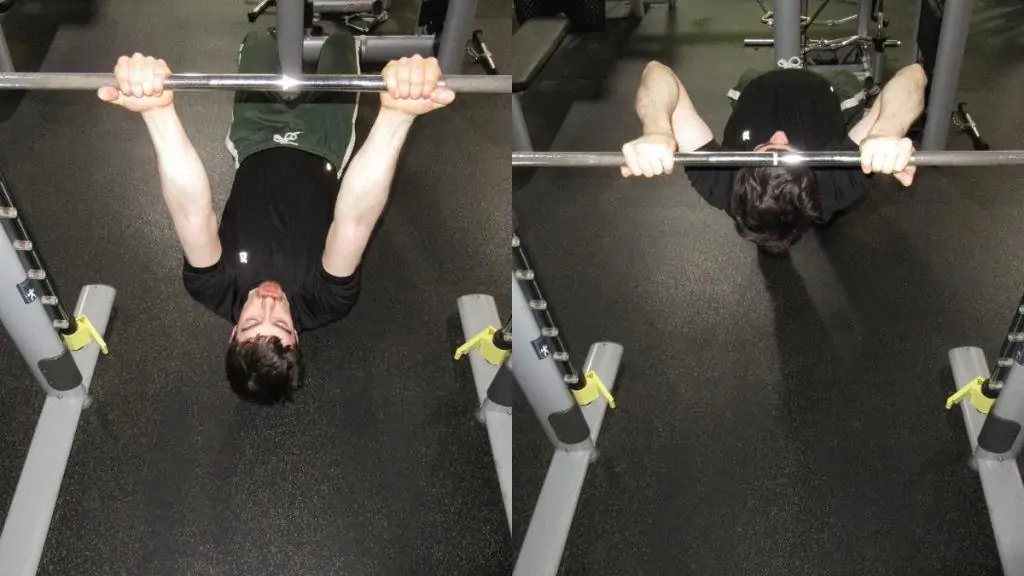
It doesn’t matter what gym, city, or country you’re in; if you can find a sturdy piece of metal or wood to grab onto, you can do inverted bicep curls. As such, they’re highly valuable if you can’t get to the gym or don’t want to pay for free weights.
The bodyweight biceps curl is also convenient in the sense that it requires minimal setup. There’s no need to use a bench, and you certainly don’t need to waste time waiting for specific weights to become available. You just grab the bar (but really, you can grip onto anything that’s secure) and start lifting.
And despite what some bodybuilders may say, bodyweight drills such as the inverted rack curl up can build plenty of mass. After all, you’re lifting your body weight, so the load is always going to be relative to your strength level.
Pro: It’s functional

While exercises like the decline bicep curl can have their place in a well-thought-out program, they don’t have as much carryover to compound movements such as chin-ups.
This is because the inverted bicep curl relies on you having good core strength in the same way that a pull-up or inverted row does. Although your biceps are performing most of the heavy lifting, you still have to keep your core tight to execute the movement both correctly and effectively.
So if you want a body that’s functional as well as a physique that’s muscular, it’s a wise idea to rely less on traditional curls and prioritize closed-chain exercises like inverted curls.
Pro: It’s adaptable

The inverted rack curl is completely adaptable to your ability level.
For example, if you’re a beginner, you can keep your feet closer to your center of gravity and use your legs to assist you during the curling motion.
On the other hand, if you’ve already been curling for years, then you can extend your legs out in front of you and lower the bar (if you’re doing the drill in a gym) so that when you hang from it, there’s a 90-degree angle at your shoulders. This positioning will place your biceps under plenty of muscle-building tension.
But if that’s not enough, you can elevate your feet as well so that your biceps have to support even more of your bodyweight.
Con: It’s not a pure isolation exercise
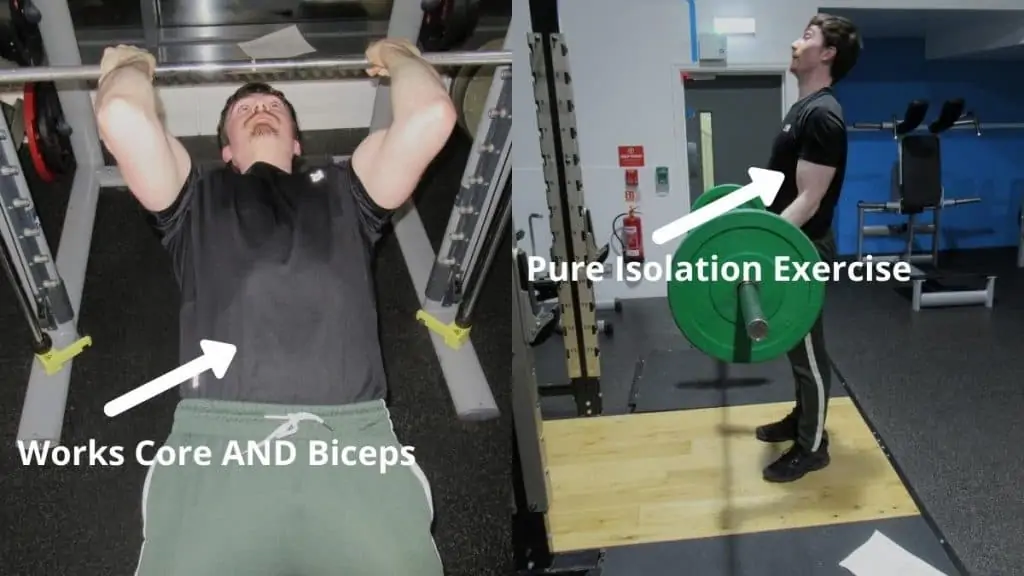
Inverted rack curls mainly work the biceps via a single joint action (elbow flexion), so you could definitely count them as an isolation exercise if you wanted to. However, they require so much more core stability and focus (especially when you first do them) than regular curls that you’re definitely going to feel a lot of ab stimulation as well.
As such, if you want to focus purely on working your biceps without having to worry about stabilizing your core, then you’re probably better of doing different exercises, such as buddy curls, if you have a training partner.
Read More: Best at home bicep workout
Conclusion: How good are inverted bicep curls?
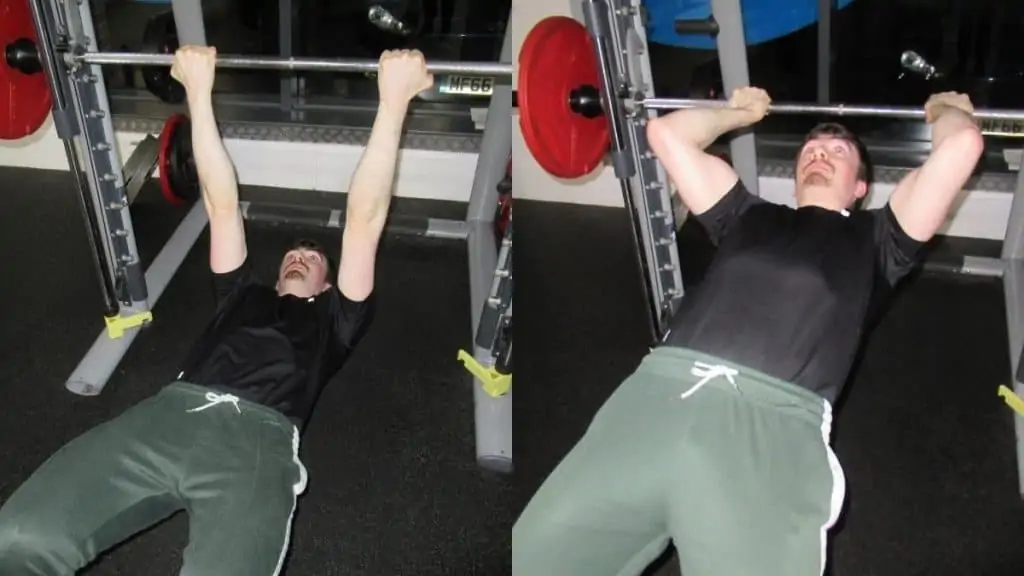
The inverted bicep curl is a hard-hitting bodyweight exercise that will add some serious size to your arms if you perform it consistently and with the correct technique. It’s completely scalable to your current strength level because you can adjust the position of the bar and/or your feet to make the exercise easier or harder.
Inverted curls also have excellent carryover to other bodyweight drills like chin-ups because they strengthen your core and gripping muscles. So if you want to build your biceps while strengthening your abs, then inverted bicep curls will make an excellent addition to your training routine.

